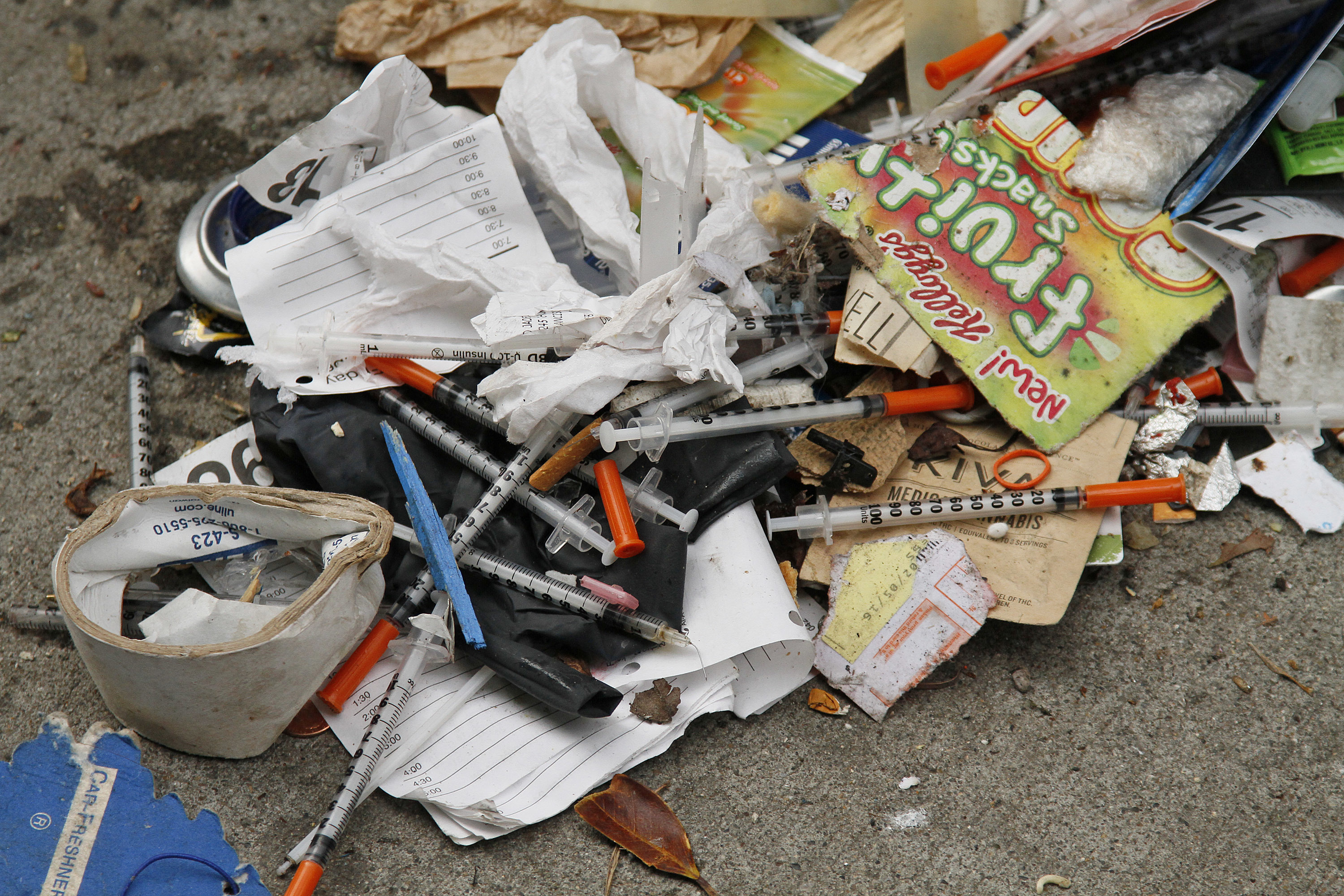- President Donald Trump said without any evidence that needles in San Francisco are flowing into the Pacific Ocean and attributed the problem to the city’s homelessness crisis.
- City officials quickly refuted the claim.
- Trump’s comments likely refer to a concentrated epidemic in the Tenderloin neighborhood, home to one of the dirtiest blocks in San Francisco.
- The block’s homeless residents – including drug dealers, addicts, and the mentally ill – leave behind piles of feces and discarded needles.
- Visit Business Insider’s homepage for more stories.
President Donald Trump’s recent visit to California prompted him to make a string of comments about the state’s escalating homelessness crisis, which represents nearly a quarter of the national homeless population.
“We can’t let Los Angeles, San Francisco, and numerous other cities destroy themselves,” Trump told reporters on Tuesday. “We have people living in our … best highways, our best streets, our best entrances to buildings.”
The following day, Trump also suggested, without evidence, that used needles in San Francisco are polluting the Pacific Ocean. He attributed this to the city’s homelessness crisis and said the pollution put San Francisco in “total violation” of environmental regulations. City officials quickly refuted those claims.
Within San Francisco, the Tenderloin neighborhood has long been considered the heart of the city’s homelessness crisis. The area is also home to the headquarters of several major tech companies like Twitter and Uber.
Last year, the New York Times attempted to find the epicenter of the crisis by pinpointing the dirtiest block in San Francisco. Statisticians compiled a list of streets with the most neighborhood complaints about sidewalk cleanliness, and the Times landed on a winner: Hyde Street's 300 block. Conditions there spurred more than 2,200 complaints over the last decade.

According to the Times, the block is populated with drug addicts and mentally ill residents, many of whom are part of the city's large homeless population. During the day, drug users reportedly host an outdoor market of sorts, selling heroin, crack cocaine, and amphetamines along the sidewalk.
Tenants have reported having to hose down urine in front of their offices or hold their breath to avoid the stench of feces. One local shop owner said drug users sometimes break off twigs from nearby trees to clean their crack pipes.

San Francisco spent $54 million on street cleaning in 2018. Both the Public Health Department and the Public Works Department claimed to have collected hundreds of thousands of needles in the Tenderloin last year. The city has also set aside nearly $3 million for a "hot spots" crew in charge of cleaning the areas near homeless encampments, and another $1 million for updates to Pit Stop, a program providing mobile toilets and dog-waste stations.
The city even has a "poop patrol" - those employees earn more than $184,000 a year to clean up feces.
But despite these efforts, the city has had a tough time getting ahead of the crisis, and the issue of sidewalk filth and rampant homelessness plagues many neighborhoods beyond the Tenderloin.
"I've lived in the Castro for 20 years and the homeless situation ... continues to flourish," one resident wrote in to the Times. Another said: "I've been here 60 years and I am, saddened to say, ready to leave."

